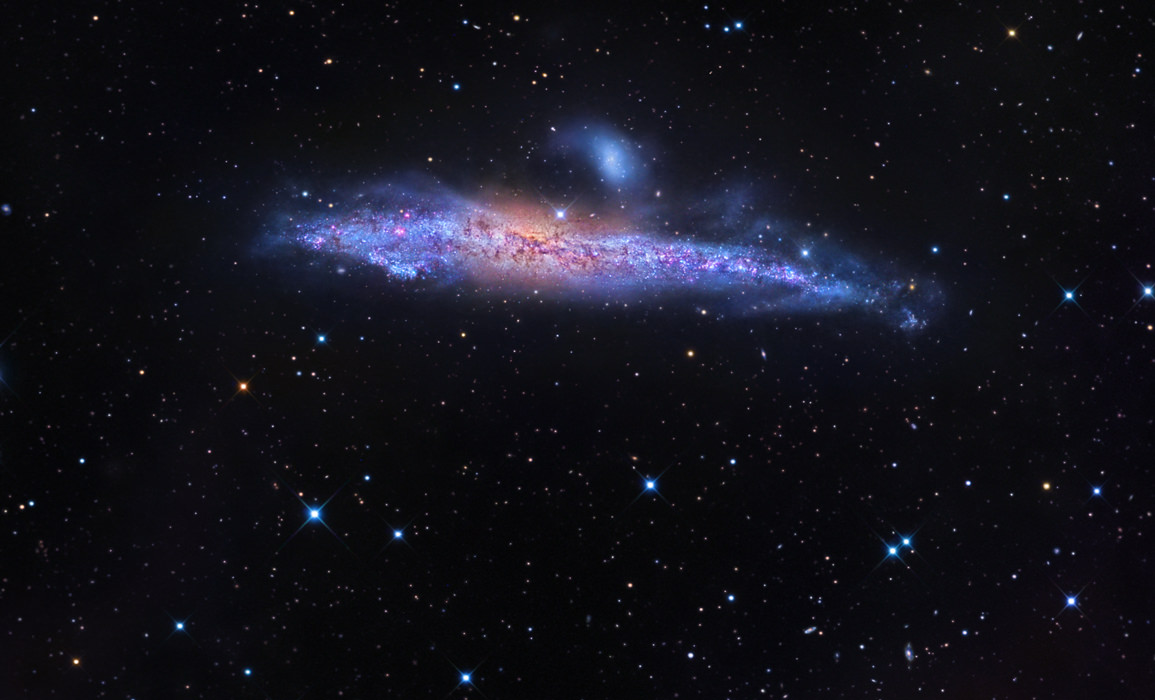[/caption]
A unique galaxy came swimming into view of noted amateur astronomer R. Jay GaBany’s telescope, with gorgeous results! NGC 4631 in northern constellation of Canes Venatici is also known as the Whale Galaxy since it has the same profile shape as a large sea mammal. This starburst galaxy is about 25 million light years from Earth, and is about 140 thousand light years in diameter, just a tad larger than the Milky Way galaxy – and with a completely different shape, from our perspective, anyway.
To take this image, Jay used a RCOS half meter telescope, Apogee Alta U16M camera and Astrodon E-Series filters, with a exposure times as follows: 1,065 minutes Luminance, 120 minutes Red, 120 minutes Green, 120 minutes Blue (All 1X1)
Jay writes on his website “Cosmotography”, “The visual impression of spouting water from the Whale’s blowhole is actually the close passing of a small companion galaxy. Its gravitational influence compressed vast clouds of gas and dust within the larger galaxy’s central region thus inciting a riotous burst of hot, new stars. The radiation released from these new suns also created a superbubble of material that now surrounds the galaxy like an ever-expanding shell. Presumably, once the companion pulls further from the Whale, the star burst event will eventually quiesce.”
See a larger version and find out more about this image on Cosmotography.

